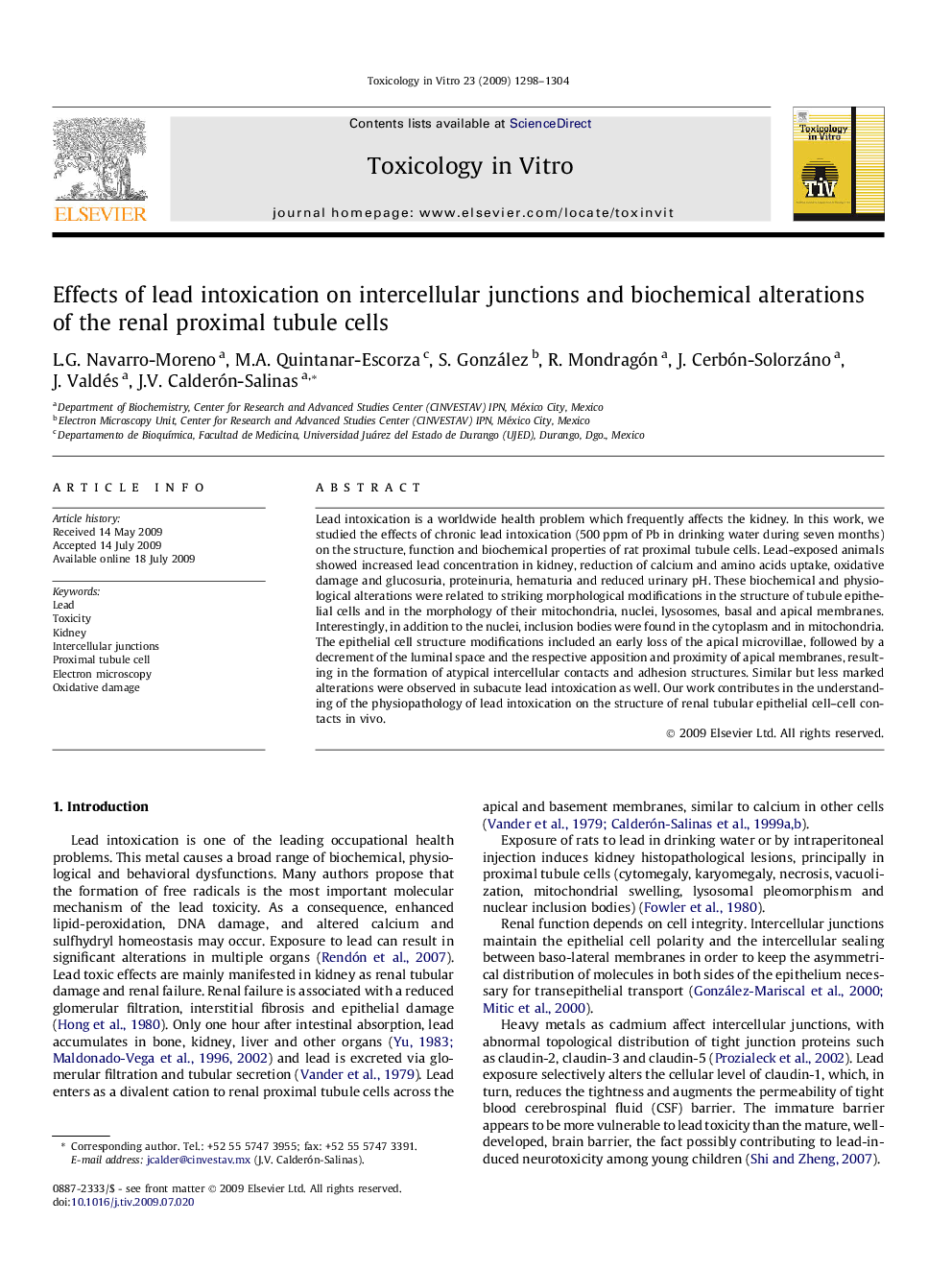| Article ID | Journal | Published Year | Pages | File Type |
|---|---|---|---|---|
| 2602714 | Toxicology in Vitro | 2009 | 7 Pages |
Lead intoxication is a worldwide health problem which frequently affects the kidney. In this work, we studied the effects of chronic lead intoxication (500 ppm of Pb in drinking water during seven months) on the structure, function and biochemical properties of rat proximal tubule cells. Lead-exposed animals showed increased lead concentration in kidney, reduction of calcium and amino acids uptake, oxidative damage and glucosuria, proteinuria, hematuria and reduced urinary pH. These biochemical and physiological alterations were related to striking morphological modifications in the structure of tubule epithelial cells and in the morphology of their mitochondria, nuclei, lysosomes, basal and apical membranes. Interestingly, in addition to the nuclei, inclusion bodies were found in the cytoplasm and in mitochondria. The epithelial cell structure modifications included an early loss of the apical microvillae, followed by a decrement of the luminal space and the respective apposition and proximity of apical membranes, resulting in the formation of atypical intercellular contacts and adhesion structures. Similar but less marked alterations were observed in subacute lead intoxication as well. Our work contributes in the understanding of the physiopathology of lead intoxication on the structure of renal tubular epithelial cell–cell contacts in vivo.
